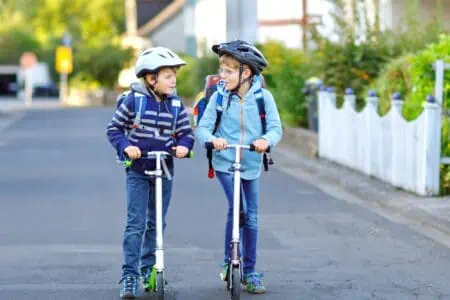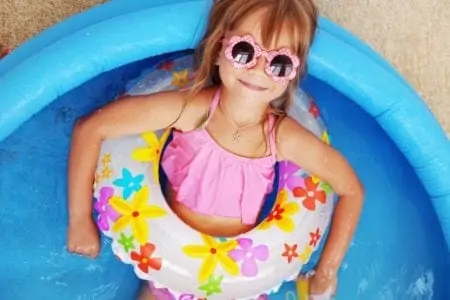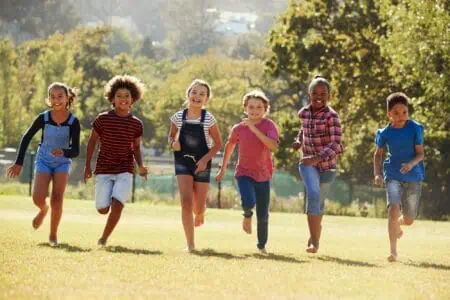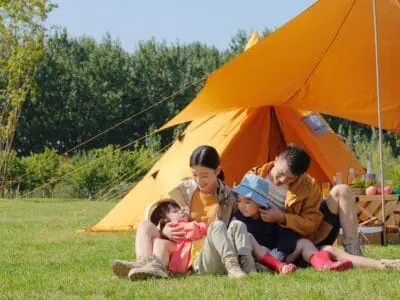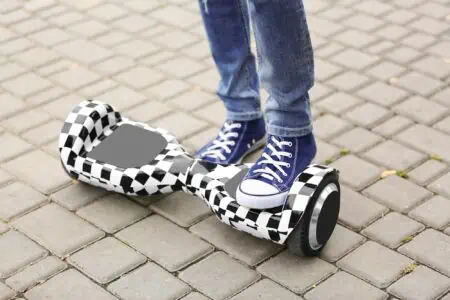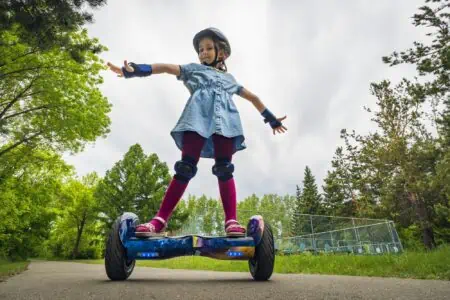Kick scooters have been a sidewalk staple for generations, but let’s be real; seeing your little one zoom off on wheels can make any parent nervous. You want them to have fun, but you also want to avoid a trip to the emergency room.
Don’t ban the wheels just yet. With the right gear and some ground rules, your child can ride safely.
My guide covers everything you need to know about scooter safety for kids. We will look at essential gear like helmets and pads, break down the safety differences between 3-wheelers and 2-wheelers, and help you pick a model with the best braking systems. Whether you have a toddler or a teen, here is how to keep the good times rolling safely.
How To Stay Safe on a Kick Scooter
To ensure scooter safety, start with a high-quality model featuring reliable brakes and a sturdy deck. The rider must always wear a CPSC-certified helmet, along with knee pads, elbow pads, and closed-toe shoes. Stick to smooth sidewalks, avoid wet surfaces, and ensure young children have constant adult supervision to prevent falls or collisions.
Are Scooters Dangerous?
Like bikes and skateboards, scooters do come with risks. Because they are low to the ground and easy to balance on, kids often get a false sense of security and ride faster than they can handle.
Injuries related to nonmotorized scooters are common, with estimates hovering around 40,000 incidents annually in the U.S. (1). Foot-powered scooters actually rank high on the list of toys associated with injuries, mostly due to falls.
While scary, most incidents involve scrapes or fractures rather than life-threatening situations. Here is a breakdown of the most common scooter injuries (2):
- Upper limb fracture: 53 percent.
- Lower limb fracture: 13 percent.
- Lower limb superficial wound or bruise: 12 percent.
- Concussion: 7 percent.
- Upper limb superficial wound or bruise: 5 percent.
- Torso wound or bruise: 4 percent.
- Skull fracture: 2 percent.
- Superficial head wound or bruise: 2 percent.
- Internal organ injuries: 2 percent.
What Age Can a Child Ride a Scooter?
Most children have the gross motor skills to ride a standard kick scooter by age three.
For toddlers aged three to six, I recommend a three-wheeled scooter. These have two wheels at the front for stability, allowing kids to learn steering without constantly tipping over. By age six, most kids have the balance required to upgrade to a standard two-wheeled scooter.
However, check the manufacturer guidelines. Some brands set the minimum age at five, while others cater to older kids starting at eight.
You can even find options for younger toddlers. Scooters for one-year-olds are typically seated ride-on models. The child sits and pushes with their feet, or an adult pushes them using a handle, like with the COOGHI 4-in-1 Scooter.
How To Choose a Safe Scooter
Not all scooters are built the same. Whether you are shopping for a preschooler or a teenager, keep these safety criteria in mind to ensure the ride is smooth and secure.
Recommended Age and Weight
Always check the manufacturer’s age and weight limits.
- Age range: A scooter meant for a teen will be too heavy and fast for a toddler. Conversely, a toddler scooter will be unstable for an older child.
- Weight limit: If a child exceeds the weight limit, the frame can bend or the brakes may fail. Always leave a little “growing room” in the weight capacity.
Adjustable Handlebars
The handlebar height is critical for control. The handlebars should sit around the rider’s waist or hip level. If they are too high, the child can’t steer properly; if they are too low, the child has to hunch over, affecting their balance. Look for a scooter with an adjustable T-bar that grows with your child.
Bells and Visibility
Audible and visual cues prevent accidents. I highly recommend attaching a bell or horn so your child can alert pedestrians on the sidewalk. If your child rides near dusk, look for scooters with LED wheels or attach after-market reflectors to the stem.
Quality Wheels and Materials
The material of the wheels affects how the scooter handles bumps.
- Plastic wheels: Fine for toddlers riding indoors or on very smooth driveways. They have zero shock absorption.
- PU (Polyurethane) wheels: Best for older kids and outdoor riding. They absorb shock from pavement cracks and pebbles, providing better traction and a smoother, safer ride.
- Wheel size: Larger wheels generally offer more stability and handle uneven terrain better than small wheels.
Deck Size and Grip
The deck (the part you stand on) should be wide enough for your child’s foot but not so wide that it becomes bulky.
- Low-to-the-ground: A lower deck lowers the center of gravity, making the scooter more stable and easier to kick.
- Grip tape: Ensure the deck has a non-slip surface, like sandpaper tape or textured rubber, to prevent feet from sliding off during a ride.
Braking System
Effective brakes are non-negotiable.
- Rear fender brake: The rider steps on the cover over the back wheel to stop. This is standard for most kids’ scooters and is intuitive to learn.
- Hand brake: Similar to a bike brake, this is found on models for older kids. It offers more stopping power but requires decent hand strength.
Scooter Safety Gear
The scooter is only half the battle; the rider needs armor, too. Proper safety gear can turn a potential emergency room visit into a simple “dust yourself off” moment.
Here is the essential checklist:
- Helmet: This is non-negotiable. A bike helmet works, but a skateboard-style helmet (often dual-certified) covers the back of the head better, which is safer for scooter falls. Look for CPSC certification, like on the Bern Comet Kids’ Helmet.
- Knee and elbow pads: These are vital for protecting joints during hard falls on concrete. Knee and elbow pads absorb the impact so your child’s bones don’t have to.
- Gloves: Instinctively, kids put their hands out when they fall. Scooter gloves protect palms from nasty road rash. Note that rigid wrist guards can make gripping the handlebars difficult, so flexible gloves with padded palms are often a better choice for steering control.
- Closed-toe shoes: Sandals and flip-flops are a hazard. Sneakers provide grip on the deck and protect toes if the child drags their foot or hits a curb.
Scooter Safety Tips
Scooters are fantastic for exercise, gross motor skills, and getting kids off screens. To keep the experience positive, keep these seven safety rules in mind:
- Pre-ride check: Before they head out, give the scooter a quick once-over. Check that the clamp is tight, the wheels aren’t wobbling, and the brakes engage properly.
- Helmet habit: No helmet, no wheels. Make it a hard rule from day one. Even a slow fall can cause a head injury.
- Sidewalks only: Scooters are low profile and hard for drivers to see. Keep kids on the sidewalk or paved trails, away from active roadways.
- Check the terrain: Scooters have small wheels that can get stuck in cracks, storm grates, or gravel. Teach your child to scan the ground ahead for obstacles and avoid wet leaves or puddles, which are slippery.
- Crosswalk safety: Teach your child to stop at every corner. They should dismount and walk the scooter across the street rather than riding through the crosswalk.
- Active supervision: For younger children, stay close enough to catch them. For older kids, ensure you are watching or they are in a safe, designated area.
- One rider only: It might look fun to double up, but standard scooters are designed for the weight and balance of one person. Two kids on one deck makes it nearly impossible to steer or stop safely.
